- Accueil
- Pages cachées
- 02 FEVRIER 2024 NEWS
02 FEVRIER 2024 NEWS
INSTITUT SUPERIEUR D'ANTHROPOLOGIE
INSTITUTE OF ANTHROPOLOGY
ONLINE COURSES / COURS A DISTANCE
INSCRIPTIONS OUVERTES
REGISTER NOW
AUTRICHE – 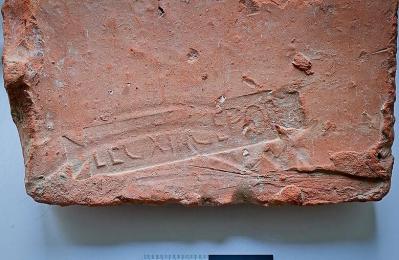 Vienne - Vienna, like many other cities in Continental Europe, traces its roots back to ancient Rome. In the first century AD, the Romans established Vindobona, a military camp that was one of many similar facilities along the Limes frontier. The camp was located in what is now the heart of the city. The location reflected its strategic value; the Danube marked the border between the Roman Empire and the German tribes. Vindobona also protected important trade routes. The excavations revealed complex findings, including remains of buildings from the oldest part of the Roman legionary brickworks as well as settlement findings from the High or Late Middle Ages (around 1050 to 1250). The excavation team from Vienna City Archeology discovered several beam graves and post settings that belong to a wooden building from the first half of the 2nd century. Initial studies of the floor plan suggest a functional interpretation of the building as part of the legion’s brickworks. One pit contained numerous stamped bricks from the Legio XIII Gemina (98–101 AD), which were used to build pillars for underfloor heating. An earth cellar with a preserved staircase and step-like wall installations dates from the High or Late Middle Ages. The room was probably used to store supplies. The archaeological investigations in the courtyard of the Kindermanngasse Elementary School, 1170 Vienna, are scheduled to be completed at the beginning of February.
Vienne - Vienna, like many other cities in Continental Europe, traces its roots back to ancient Rome. In the first century AD, the Romans established Vindobona, a military camp that was one of many similar facilities along the Limes frontier. The camp was located in what is now the heart of the city. The location reflected its strategic value; the Danube marked the border between the Roman Empire and the German tribes. Vindobona also protected important trade routes. The excavations revealed complex findings, including remains of buildings from the oldest part of the Roman legionary brickworks as well as settlement findings from the High or Late Middle Ages (around 1050 to 1250). The excavation team from Vienna City Archeology discovered several beam graves and post settings that belong to a wooden building from the first half of the 2nd century. Initial studies of the floor plan suggest a functional interpretation of the building as part of the legion’s brickworks. One pit contained numerous stamped bricks from the Legio XIII Gemina (98–101 AD), which were used to build pillars for underfloor heating. An earth cellar with a preserved staircase and step-like wall installations dates from the High or Late Middle Ages. The room was probably used to store supplies. The archaeological investigations in the courtyard of the Kindermanngasse Elementary School, 1170 Vienna, are scheduled to be completed at the beginning of February.
https://arkeonews.net/viennese-archaeologists-find-legio-xiii-gemina-bricks/
INDE – 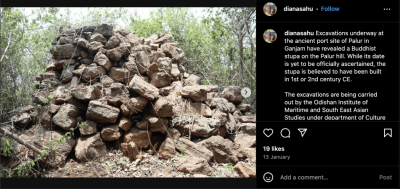 Palur - Archaeologists have unearthed an ancient stupa at the historic port site of Palur, Ganjam District, which dates to the early spread of Buddhism on the Indian subcontinent and beyond: specifically, across the Bay of Bengal along maritime trade routes to modern-day Sri Lanka and Southeast Asian nations like Myanmar, Indonesia, Malaysia, and Thailand. Diana Sahu, writing for The New India Express, noted: “While the date of the stupa located atop Palur hill is yet to be officially ascertained, it is believed to have been built in the 1st or 2nd century CE.” (The New India Express) On her Instagram account, she shared an image of the stupa, which resembles a mound of stones, with a range of antiquities recovered from the sites. They include: “semi-precious stones, coins, rings, terracotta figurines and conch shell bangles and rings.” (The New Indian Express) Sunil Patnaik, senior archaeologist and the director (excavation) of government-run OIMSEAS, told The New Indian Express: “The stupa stands on a rectangular platform measuring 12 metre in length and is three metre wide. The remains of the stupa rises up to 5.5 metre [sic] . . . Pieces of exotic foreign red polished ware have also been found from Palur.” (The New Indian Express)
Palur - Archaeologists have unearthed an ancient stupa at the historic port site of Palur, Ganjam District, which dates to the early spread of Buddhism on the Indian subcontinent and beyond: specifically, across the Bay of Bengal along maritime trade routes to modern-day Sri Lanka and Southeast Asian nations like Myanmar, Indonesia, Malaysia, and Thailand. Diana Sahu, writing for The New India Express, noted: “While the date of the stupa located atop Palur hill is yet to be officially ascertained, it is believed to have been built in the 1st or 2nd century CE.” (The New India Express) On her Instagram account, she shared an image of the stupa, which resembles a mound of stones, with a range of antiquities recovered from the sites. They include: “semi-precious stones, coins, rings, terracotta figurines and conch shell bangles and rings.” (The New Indian Express) Sunil Patnaik, senior archaeologist and the director (excavation) of government-run OIMSEAS, told The New Indian Express: “The stupa stands on a rectangular platform measuring 12 metre in length and is three metre wide. The remains of the stupa rises up to 5.5 metre [sic] . . . Pieces of exotic foreign red polished ware have also been found from Palur.” (The New Indian Express)
https://www.buddhistdoor.net/news/ancient-buddhist-stupa-excavated-at-port-site-of-palur-india/
ITALIE – Milan - A new peer-reviewed study entitled “Forensic toxicological analyses reveal the use of cannabis in Milano (Italy) in the 1600s,” published in the Journal of Archeological Science, established that 17th-century Italians used cannabis for recreational purposes or medical purposes. Basing their study on the crypt of the once-renowned 17th century Milanese hospital Ospedale Maggiore, researchers analyzed femoral bone samples from the remains of the hospital patients who had been interned in the crypt. The aim of the examination was to see whether these contained cannabis. The researchers analyzed nine femoral bones belonging to seven males and two females. The toxicological examinations found that out of these nine individuals, the presence of two cannabinoids, compounds found within the cannabis plant, was present in two femoral samples. The team then attempted to ascertain whether the cannabis was intended for recreational or medicinal use. A study of the hospital pharmacopeia and the documentation identifying the medicine used within the hospital precincts showed cannabis was not on the list. According to the researchers, this indicates the possible recreational use of the plant rather than a medical one. However, the researchers also noted that the patient may have been administered the plant when treated by a doctor outside of the hospital. The team said these findings are evidence that the 17th-century Italians, in general, and the population of Milano, in particular, were exposed to the plant. As such, this is the first physical evidence of the use of cannabis in the modern era not solely in Italy but also in Europe, the team noted.
https://www.jpost.com/archaeology/article-784464
CHINE – 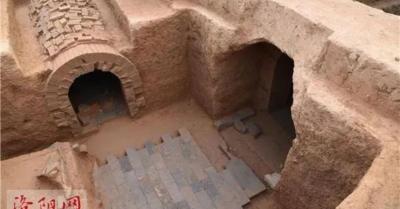
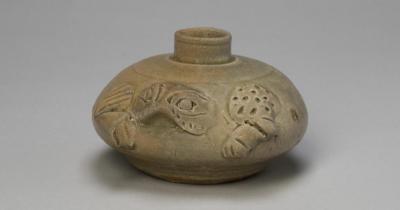
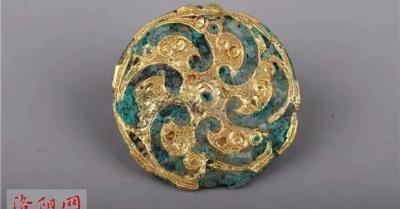 Mengjin - Archeologists found the three “high-level” tombs while crews built a pump station in the Mengjin District of Henan province. They included items researchers had never seen in that area before. The Chinese Academy of Social Sciences reported Thursday, January 25 that the “family cemetery” dates from the Wei and Jin dynasties. The Miami Herald notes the Western Jin dynasty lasted from 265-317. The tomb labeled “M1” by the China Archeological Network is more than 40 yards long and contained more than 120 artifacts. A mechanical translation of the Chinese report reviewed by Knewz.com indicates the artifacts included “exquisite bronze bag gold jewelry, gold ‘five red’ and other decorations.”Researchers also found “jade ornaments,” such as a belt hook and a scabbard for a sword. Lacquerwear woven with ivory also was inside. “Lacquerware and ivory are all symbols of status,” the report said. The tomb has several doors. One is stone, while another is sealed with brick. Even the steps to the burial site can have meaning. M1 has seven of them, indicating the deceased had a higher status than the people buried in Tomb M2 with three steps. Tomb M2 is not as elegant, but it had coins inside.“Its era may be as early as the Cao Wei period,” the Chinese report said. Wikipedia indicates that dynasty existed from 220-266. But M2 also contained items from “Yang Jun’s rebellion,” which ended with him dead in 291. Two tombstones were removed from the burial site, but they offer no information on who was buried there. The discovery suggests more high-level ancient burial sites could be nearby. “As the research work progresses further, more historical puzzles will be solved,” archeologist Liu Bin said.
Mengjin - Archeologists found the three “high-level” tombs while crews built a pump station in the Mengjin District of Henan province. They included items researchers had never seen in that area before. The Chinese Academy of Social Sciences reported Thursday, January 25 that the “family cemetery” dates from the Wei and Jin dynasties. The Miami Herald notes the Western Jin dynasty lasted from 265-317. The tomb labeled “M1” by the China Archeological Network is more than 40 yards long and contained more than 120 artifacts. A mechanical translation of the Chinese report reviewed by Knewz.com indicates the artifacts included “exquisite bronze bag gold jewelry, gold ‘five red’ and other decorations.”Researchers also found “jade ornaments,” such as a belt hook and a scabbard for a sword. Lacquerwear woven with ivory also was inside. “Lacquerware and ivory are all symbols of status,” the report said. The tomb has several doors. One is stone, while another is sealed with brick. Even the steps to the burial site can have meaning. M1 has seven of them, indicating the deceased had a higher status than the people buried in Tomb M2 with three steps. Tomb M2 is not as elegant, but it had coins inside.“Its era may be as early as the Cao Wei period,” the Chinese report said. Wikipedia indicates that dynasty existed from 220-266. But M2 also contained items from “Yang Jun’s rebellion,” which ended with him dead in 291. Two tombstones were removed from the burial site, but they offer no information on who was buried there. The discovery suggests more high-level ancient burial sites could be nearby. “As the research work progresses further, more historical puzzles will be solved,” archeologist Liu Bin said.
https://knewz.com/archeology-tombs-dynasty-wei-jin-china/
CHINE – 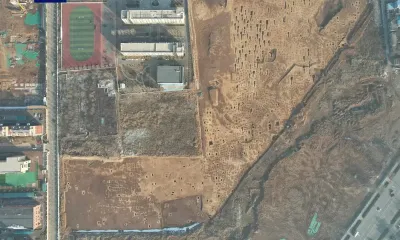 Jinan - A total of 301 ancient tombs were recently unearthed in east China's Shandong Province, according to the Archaeology Institute of Jinan. This was reported by The Xinhua News Agency. The tombs, which span from the Warring States period (475-221 BC) to the Qing Dynasty (1644-1911), were discovered in Jinan City, capital of Shandong Province. In addition to tombs, other ruins including two kiln sites, three ash pits, and eight wells, were also excavated. From these sites, 850 sets of artifacts, including clay pots, ceramic plates, and copper coins, were unearthed. According to the institute, the tombs were distributed and arranged in an orderly manner, and one of the tomb cemeteries, which dates back to the Warring States Period to the Wei and Jin dynasties (220-420), was probably in use for hundreds of years, providing tomb development materials for research.
Jinan - A total of 301 ancient tombs were recently unearthed in east China's Shandong Province, according to the Archaeology Institute of Jinan. This was reported by The Xinhua News Agency. The tombs, which span from the Warring States period (475-221 BC) to the Qing Dynasty (1644-1911), were discovered in Jinan City, capital of Shandong Province. In addition to tombs, other ruins including two kiln sites, three ash pits, and eight wells, were also excavated. From these sites, 850 sets of artifacts, including clay pots, ceramic plates, and copper coins, were unearthed. According to the institute, the tombs were distributed and arranged in an orderly manner, and one of the tomb cemeteries, which dates back to the Warring States Period to the Wei and Jin dynasties (220-420), was probably in use for hundreds of years, providing tomb development materials for research.
https://ukranews.com/en/news/978364-301-ancient-tombs-unearthed-in-east-china
GRECE – 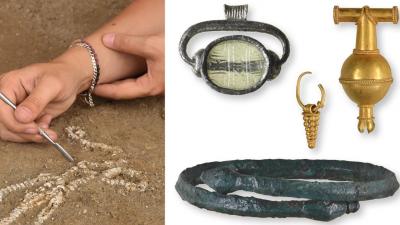
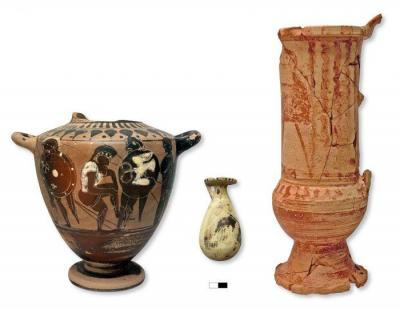 Evia - This is one of those times — an honest-to-goodness treasure trove of gold, silver, jewelry, and vases uncovered on the Greek island of Evia. According to the Independent, a team of 50 researchers discovered the cache while excavating a small temple that dates back to the 7th century BC. A translated Facebook post from Greece’s Ministry of Culture, posted earlier this month, sheds light on the wondrous finds.“The excavation of the ancient temple brought to light rich relics: Corinthian alabasters, Attic vessels, locally produced ritual goods, as well as jewelry made of precious materials (gold, silver, coral, amber), amulets from the East, copper and iron armament fittings,” the post read. The latest finds are part of an ongoing excavation project that, in 1997, turned up a temple dedicated to the famously testy Greek god of the moon, the hunt, and childbirth. “The excavations that followed proved that it is the temple of the goddess Artemis, built toward the end of the 6th century BC. Although the superstructure and decoration of this building…have been almost completely destroyed, its foundations protected the walls of older buildings, the remains of which are preserved in excellent condition,” researchers said. One older building is a freshly discovered second temple containing the relics. The temple also features a “peculiar” number of hearths used as alters. The peculiarity comes from so many alters crammed into such a small room; the temple is only about 33m long. The hearths are thick with ash and charred bones. “The possibility that some of them predate the temple cannot be ruled out. The first level of use of [one of the altars] yielded pottery dating to the end of the 8th century BC,” according to the Greek Ministry of Culture.
Evia - This is one of those times — an honest-to-goodness treasure trove of gold, silver, jewelry, and vases uncovered on the Greek island of Evia. According to the Independent, a team of 50 researchers discovered the cache while excavating a small temple that dates back to the 7th century BC. A translated Facebook post from Greece’s Ministry of Culture, posted earlier this month, sheds light on the wondrous finds.“The excavation of the ancient temple brought to light rich relics: Corinthian alabasters, Attic vessels, locally produced ritual goods, as well as jewelry made of precious materials (gold, silver, coral, amber), amulets from the East, copper and iron armament fittings,” the post read. The latest finds are part of an ongoing excavation project that, in 1997, turned up a temple dedicated to the famously testy Greek god of the moon, the hunt, and childbirth. “The excavations that followed proved that it is the temple of the goddess Artemis, built toward the end of the 6th century BC. Although the superstructure and decoration of this building…have been almost completely destroyed, its foundations protected the walls of older buildings, the remains of which are preserved in excellent condition,” researchers said. One older building is a freshly discovered second temple containing the relics. The temple also features a “peculiar” number of hearths used as alters. The peculiarity comes from so many alters crammed into such a small room; the temple is only about 33m long. The hearths are thick with ash and charred bones. “The possibility that some of them predate the temple cannot be ruled out. The first level of use of [one of the altars] yielded pottery dating to the end of the 8th century BC,” according to the Greek Ministry of Culture.
https://explorersweb.com/greek-treasure/
GRECE – 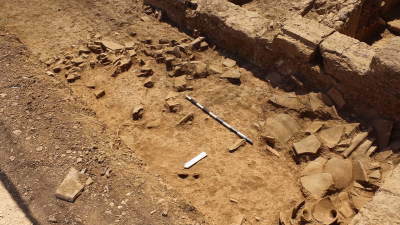
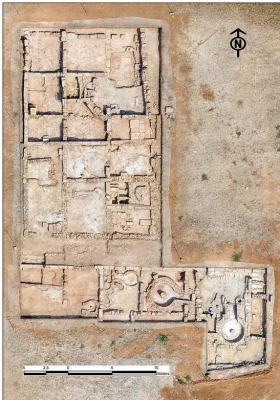 Sikyon - A team led by Scott Gallimore of Wilfrid Laurier University and Martin Wells of Austin College discovered a 1,600-year-old Roman-era wine shop in the ancient city of Sikyon in southern Greece, which was destroyed by a sudden event, possibly an earthquake or building collapse. The discovery includes shattered vessels and a collection of 60 coins scattered on the floor, providing insight into the ancient establishment’s final moments. The wine shop, situated in the ancient city of Sikyon (Sicyon) on the northern coast of the Peloponnese in southern Greece, operated during the period when the Roman Empire held sway over the region. As experts investigated the wine shop, they discovered not only coins but also marble tabletops and various vessels made of bronze, glass, and ceramic, according to Live Science. The archaeological site reveals a complex that housed the wine shop on its northern end. The larger complex featured a series of workshops equipped with kilns and installations designed for pressing grapes or olives. Despite the abundance of artifacts, the researchers, in an email interview with Live Science, expressed the challenge of pinpointing the specific types of wine sold at the establishment.
Sikyon - A team led by Scott Gallimore of Wilfrid Laurier University and Martin Wells of Austin College discovered a 1,600-year-old Roman-era wine shop in the ancient city of Sikyon in southern Greece, which was destroyed by a sudden event, possibly an earthquake or building collapse. The discovery includes shattered vessels and a collection of 60 coins scattered on the floor, providing insight into the ancient establishment’s final moments. The wine shop, situated in the ancient city of Sikyon (Sicyon) on the northern coast of the Peloponnese in southern Greece, operated during the period when the Roman Empire held sway over the region. As experts investigated the wine shop, they discovered not only coins but also marble tabletops and various vessels made of bronze, glass, and ceramic, according to Live Science. The archaeological site reveals a complex that housed the wine shop on its northern end. The larger complex featured a series of workshops equipped with kilns and installations designed for pressing grapes or olives. Despite the abundance of artifacts, the researchers, in an email interview with Live Science, expressed the challenge of pinpointing the specific types of wine sold at the establishment.
https://arkeonews.net/1600-year-old-roman-era-wine-shop-unearthed-in-greece/
ABU DHABI – 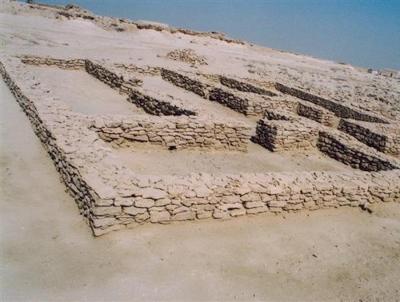
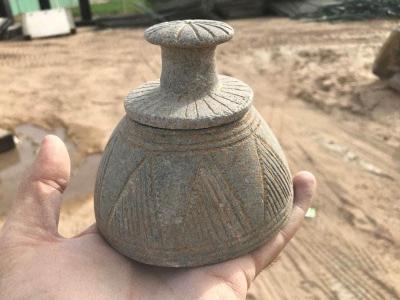 Sas Al Nakhl - New findings demonstrate the resilience and inventiveness of local Bronze Age societies (Umm an-Nar Bronze Age culture), as well as the emirate’s role in regional and international trade, nearly 65 years after the first archaeological excavations in Abu Dhabi. A recurring theme at Abu Dhabi excavation sites has been the use of natural resources, such as copper, pearls, plaster, and freshwater, to facilitate international trade, sustain communities, and establish prosperity. Archaeologists from the Abu Dhabi Department of Culture and Tourism (DCT Abu Dhabi) kicked off the new archaeological season by announcing discoveries from the Umm Nar Bronze Age culture (2700-2000 BCE) on Sas Al Nakhl Island. Recent excavations on Sas Al Nakhl Island, also known as Umm an-Nar, have revealed bitumen from ancient Mesopotamia (modern-day Iraq) that was used to waterproof pottery, as well as a clay-lined storage pit. One fragment, which bears the impression of wood and two pieces of rope, was most likely part of a Bronze Age boat. Sas Al Nakhl also referred to locally as Umm an-Nar, which means “mother of fire” or “the place of fire,” is situated close to the contemporary city center. Ashes and dark soil, which result from fires, cover large areas of the site, which may be the reason for this name. The island has given the Bronze Age Umm an-Nar culture its name because it was the first site of this era to be excavated in the area. Finds from the recent excavations include a well-preserved assemblage of over 30,000 bones revealing new insights into the Bronze Age diet. This diet consisted mostly of fish and seabirds. Large animal bones discovered gathered around a large, circular fireplace point to ritualistic or group activities. A few of the bones have been fashioned into spindles and spatulas, among other things. These new findings indicate that it was also a thriving port of significant international importance between 2800 and 2200 BCE, trading with Mesopotamia and the Indus Valley (modern-day Pakistan and India).
Sas Al Nakhl - New findings demonstrate the resilience and inventiveness of local Bronze Age societies (Umm an-Nar Bronze Age culture), as well as the emirate’s role in regional and international trade, nearly 65 years after the first archaeological excavations in Abu Dhabi. A recurring theme at Abu Dhabi excavation sites has been the use of natural resources, such as copper, pearls, plaster, and freshwater, to facilitate international trade, sustain communities, and establish prosperity. Archaeologists from the Abu Dhabi Department of Culture and Tourism (DCT Abu Dhabi) kicked off the new archaeological season by announcing discoveries from the Umm Nar Bronze Age culture (2700-2000 BCE) on Sas Al Nakhl Island. Recent excavations on Sas Al Nakhl Island, also known as Umm an-Nar, have revealed bitumen from ancient Mesopotamia (modern-day Iraq) that was used to waterproof pottery, as well as a clay-lined storage pit. One fragment, which bears the impression of wood and two pieces of rope, was most likely part of a Bronze Age boat. Sas Al Nakhl also referred to locally as Umm an-Nar, which means “mother of fire” or “the place of fire,” is situated close to the contemporary city center. Ashes and dark soil, which result from fires, cover large areas of the site, which may be the reason for this name. The island has given the Bronze Age Umm an-Nar culture its name because it was the first site of this era to be excavated in the area. Finds from the recent excavations include a well-preserved assemblage of over 30,000 bones revealing new insights into the Bronze Age diet. This diet consisted mostly of fish and seabirds. Large animal bones discovered gathered around a large, circular fireplace point to ritualistic or group activities. A few of the bones have been fashioned into spindles and spatulas, among other things. These new findings indicate that it was also a thriving port of significant international importance between 2800 and 2200 BCE, trading with Mesopotamia and the Indus Valley (modern-day Pakistan and India).
IRAQ – 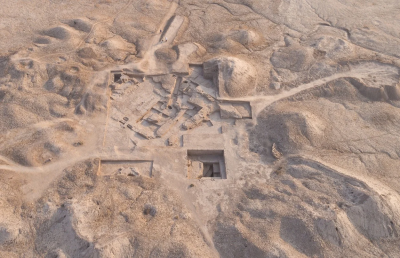 Girsu - Archaeologists discovered two temples, with one buried over the other, during excavations at Girsu, a Sumerian city in southeastern Iraq now known as Tello. The fourth century B.C. is when the more recent Hellenistic temple was built, and it might be connected to Alexander the Great. Inside the temple, the archaeologists found a fired brick which had an Aramaic and Greek inscription, that referred to “the giver of two brothers”, which was seen as a possible reference made to the Macedonian king, who had ruled for 13 years from 336 BC to 323 BC and conquered much of the known world. The older temple, on the other hand, was discovered by archaeologists from London’s British Museum while conducting excavations in the ancient megacity of Girsu, which is a Sumerian city now called Tello. The excavations are part of an ongoing venture conducted by the museum known as The Girsu Project that focuses on learning more about the city’s storied history. The remnants of the older temple were found to be buried in the same spot as the newer one, which was dedicated to Hercules and Ningirsu (also known as Ninurta), the Greek deity’s Sumerian equivalent. This was noted by Ancient Mesopotamia curator and archaeologist Sebastien Rey from the British Museum. Rey led the excavations held in the area. The archaeologists note that it was not a coincidence that the temple was raised on a site where another one stood 1,500 years before. The area could have held significance for those from Mesopotamia.
Girsu - Archaeologists discovered two temples, with one buried over the other, during excavations at Girsu, a Sumerian city in southeastern Iraq now known as Tello. The fourth century B.C. is when the more recent Hellenistic temple was built, and it might be connected to Alexander the Great. Inside the temple, the archaeologists found a fired brick which had an Aramaic and Greek inscription, that referred to “the giver of two brothers”, which was seen as a possible reference made to the Macedonian king, who had ruled for 13 years from 336 BC to 323 BC and conquered much of the known world. The older temple, on the other hand, was discovered by archaeologists from London’s British Museum while conducting excavations in the ancient megacity of Girsu, which is a Sumerian city now called Tello. The excavations are part of an ongoing venture conducted by the museum known as The Girsu Project that focuses on learning more about the city’s storied history. The remnants of the older temple were found to be buried in the same spot as the newer one, which was dedicated to Hercules and Ningirsu (also known as Ninurta), the Greek deity’s Sumerian equivalent. This was noted by Ancient Mesopotamia curator and archaeologist Sebastien Rey from the British Museum. Rey led the excavations held in the area. The archaeologists note that it was not a coincidence that the temple was raised on a site where another one stood 1,500 years before. The area could have held significance for those from Mesopotamia.
EQUATEUR - Upano - A new study has revealed the discovery of an extensive network of pre-Hispanic urban settlements in the upper Amazon. These settlements are distinguished by their built platforms and plazas and are interconnected by wide, straight roads. The research, based on more than 20 years of interdisciplinary research, suggests that this original 2500-year-old society constitutes the earliest and largest low-density agrarian urbanism documented in the Amazon thus far. Stéphen Rostain and colleagues present evidence for an agrarian-based civilization that began more than 2500 years ago in the Upano Valley of Amazonian Ecuador, a region in the eastern foothills of the Andes. Based on more than 20 years of interdisciplinary research that included fieldwork and light detection and ranging (LIDAR) mapping, Rostain et al. describe urbanism at a scale never before documented in Amazonia, consisting of more than 6000 anthropogenic rectangular earthen platforms and plaza structures connected by footpaths and roads and surrounded by expansive agricultural landscapes and river drainages within the 300 square kilometer survey area. The authors identified at least 15 distinct settlement sites of various sizes based on clusters of structures. However, according to Rostain et al., the most notable elements of this built environment are the extensive and complex regional-scale road network connecting urban centers and the surrounding hinterland. Archaeological excavations indicate that the construction and occupation of the platforms and roads occurred between ~500 BCE and 300 to 600 CE and was carried out by groups from the Kilamope and later Upano cultures. Rostain et al. note that the Upano sites are different from other monumental sites discovered in Amazonia, which are more recent and less extensive. “Such a discovery is another vivid example of the underestimation of Amazonia’s twofold heritage: environmental but also cultural, and therefore Indigenous,” write Rostain et al. “…we believe that it is crucial to thoroughly revise our preconceptions of the Amazonian world and, in doing so, to reinterpret contexts and concepts in the necessary light of an inclusive and participatory science.” Reference: “Two thousand years of garden urbanism in the Upper Amazon” by Stéphen Rostain, Antoine Dorison, Geoffroy de Saulieu, Heiko Prümers, Jean-Luc Le Pennec, Fernando Mejía Mejía, Ana Maritza Freire, Jaime R. Pagán-Jiménez and Philippe Descola, 11 January 2024, Science.
DOI: 10.1126/science.adi6317
https://scitechdaily.com/scientists-discover-2500-year-old-lost-valley-of-cities-in-the-amazon/
